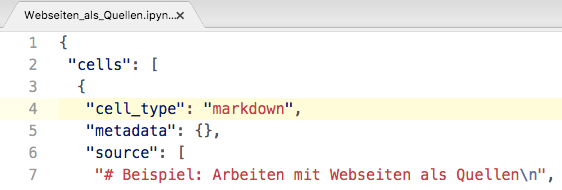Talking with Code¶
Using digital methods in humanties requieres researchers to keep track e.g. of the algorithms used to clean data or the queries to a SQL database. One way to make these parts of digital humanities research available to a general audience is an integrated approach to programming and documenting. This “literal programming” lies at the heart of Jupyter Notebooks, where the researcher can interactivley write code and documentation in a browser.
This book is an example how this form of documentation can be extended to a fullfledged online publication.
Jupyter Notebooks¶
Based on the notion of „literal programming“
Program tells a story of its own
Sourcecode, text, and outputs intertwined

Structure¶
Can be structured, by chapters, sections, etc. Including references.
Text can contain Latex, HTML links, etc.

Pro/Con¶
Pro: Accessible, Long-term readable, Active community Con: A new form of „lock-in“ ?, You’ll need to program !?


